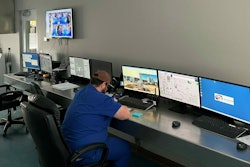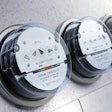Transcription of Feed & Grain Chat withRichard Obermeyer, Director of Feed Production for Aviagen.
Elise Schafer, editor of Feed & Grain: Hi everyone, welcome toFeed & Grain Chat. I'm your host Elise Schafer, editor ofFeed & Grain. This edition ofFeed & Grain Chatis brought to you by WATT Global Media and Feedandgrain.com is your source for the latest news, product and equipment information for the grain handling and feed manufacturing industries.
Today, I'm joined on zoom by by Richard Obermeyer, director of feed production for Aviagen North America, a global poultry breeding company based in Huntsville, AL. He's here today to talk about how lights out manufacturing can reduce the spread of pathogens through feed.
Hi, Richard, how are you?
Richard Obermeyer, director of feed production, Aviagen:Good, Elise. How are you today?
Schafer:I'm doing well. Thanks for coming on.
Obermeyer:Thank you very much. Appreciate the opportunity, of course.
Schafer:Well, Richard, let's get right into it. What are the most effective measures that can be taken inside a feed mill to keep pathogens from spreading?
Obermeyer: One of the most effective is, of course, limiting people movement or traffic and around the facility. Those introduce risk into a biosecure facility. So anytime you can reduce risk, you reduce the possibility of contaminating an area or cross contaminating it.
因此,非常重要的是能够单独的你r processes to be able to keep your areas as clean and as empty as possible. Basically, no people, no operations in there but the equipment itself. Because every time somebody walks into an area or tries to bring a tool into an area, you're entering a lot of risk into that area.
Schafer:Richard, what's your opinion on lights out manufacturing in feed mills to eliminate biosecurity threats posed by human interaction?
Obermeyer: I’m in favor of lights out manufacturing just for the pure effect of being able to operate a facility without anybody in it. I think that's where we're going in the future, but then also the biosecurity aspect of it — again as we spoke earlier — anytime you can reduce people entering an area, you are reducing the risk of that area and by being able to operate machinery without anybody in those areas, you are greatly reducing your possibility of cross contamination in your biosecure area, opening and closing doors — all of that creates additional risk that you eliminate by having a lights out type manufacturing.
Schafer:Is this technology possible now or is lights out manufacturing only possible in the future?
Obermeyer:I'd say we're close! How about that for a good answer? I think there are several processes that are completely lights out now. I think of grinding can be a lights out process, batching can be a lights out process.
So, there are some processes that are already there, but there are some that we still have some work to do. Specifically, to me, the big elephant in the room is pelleting. The pelleting machine is, as you know, the last piece that requires some experience to operate. And you're working with different issues with the temperatures and feed moistures and different ingredient matrixes with your recipes that create some issues with pelleting.
我think that's the last area we have to work on. I think it's possible in the long run, yes. As new sensors come along, new technologies, quicker and faster control systems. I think we can get there and I look forward to being there! But I still think we've got a ways to go, but I like the thought. I’d like to be able to do that. I think that's what we need to get there.
Schafer:Great! What aspects of the feed mill are the closest to achieving lights out manufacturing?
Obermeyer:正如我所说的,我认为磨已经存在。我think batching is already there. I think you can grind and batch with lights out right now, so I think those two areas are definitely there.
But again, I think pelleting is by far the farthest away. We've come a long way. We're much better than we used to be years ago. And I hate to tell everybody in the audience that I've got 40 years in this business, so I know what it was like 40 years ago to pellet feed and it's so much better than it was then. But to be able to, you know, shut the lights off and not ever go to that pellet mill, I just don't think we're quite there yet and we're getting closer, but we still have a ways to go.
Schafer:Well, there you have it on what the future may hold for feed mills and grain processing operations. Thank you for your time today. Richard,
Obermeyer:Thank you very much.
Schafer:And if you'd like to learn more about the latest cutting-edge feed processing plant built by Aviagen in Pikeville, TN, be sure to read theOctober/November editionof Feed & Grain. That's all for today'sFeed & Grain Chat. I hope to see you next time!
Advances in feed production equipment are taking the industry towardslights out manufacturing, in which automation technology fully controls and carries out all aspects of production with little to no human intervention.
The lights out concept improves worker safety in manufacturing settings, but in feed applications, it also enhances biosecurity — as human contact with milling equipment can contribute to feed contamination.
Global poultry breederAviagenis on the leading-edge of biosecure feed production, and installed advanced automation, capable of performing lights out operations, throughout its new Pikeville, TN, feed mill. Richard Obermeyer, Aviagen’s director of feed production, shares his views on how it helps reduce risk in this Feed & Grain Chat.






















